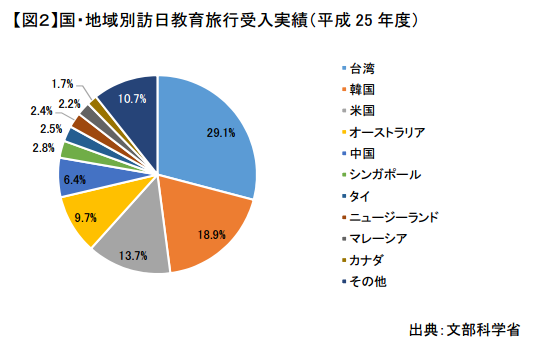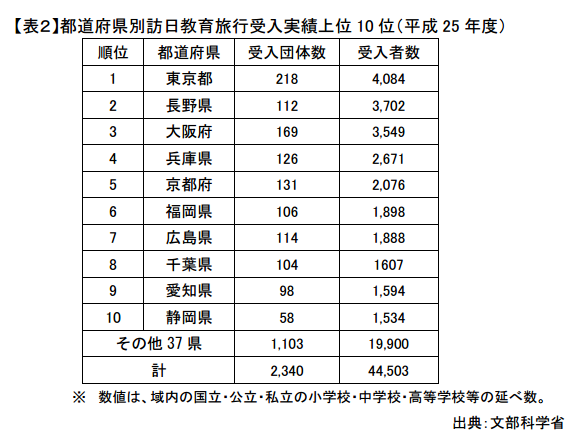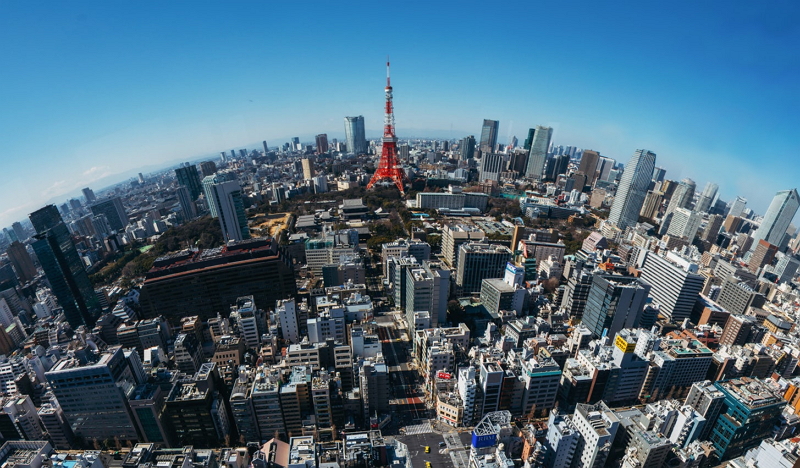
Japan Tourism Agency (JTA) and Ministry of Education, Culture, Sports, Science and Technology (MEXT) recently released a report on international education travel in Japan. The Japanese government has a goal to increase international students by 50% by 2020 from about 40,000 in 2013 under the action program 2015 for a tourism-oriented nation, particularly focusing on an increase in international students in local regions.
A total of 2,340 schools in Japan received international students in 2013, according to the report. Among nations or regions sending international students to Japan, Taiwan was the top with a share of 29.1%, followed by Korea (18.9%), U.S.A. (13.7%) and Australia (9.7%). Among prefectures receiving international students, the top was Tokyo with 4,084 students, followed by Nagano with 3,702 students and Osaka with 3,549 students.


The report says that the success of Nagano mainly resulted from coordination with the related-organizations by English or Chinese-speaking staff of the prefecture’s international tourism promotion office. The Nagano Prefecture also shares the budget for the student exchange program and provides international students with a variety of supports including 20 regular interpreters and experience programs, such as farm stay or participation in school activities for Japanese culture and tradition.
In Japanese



